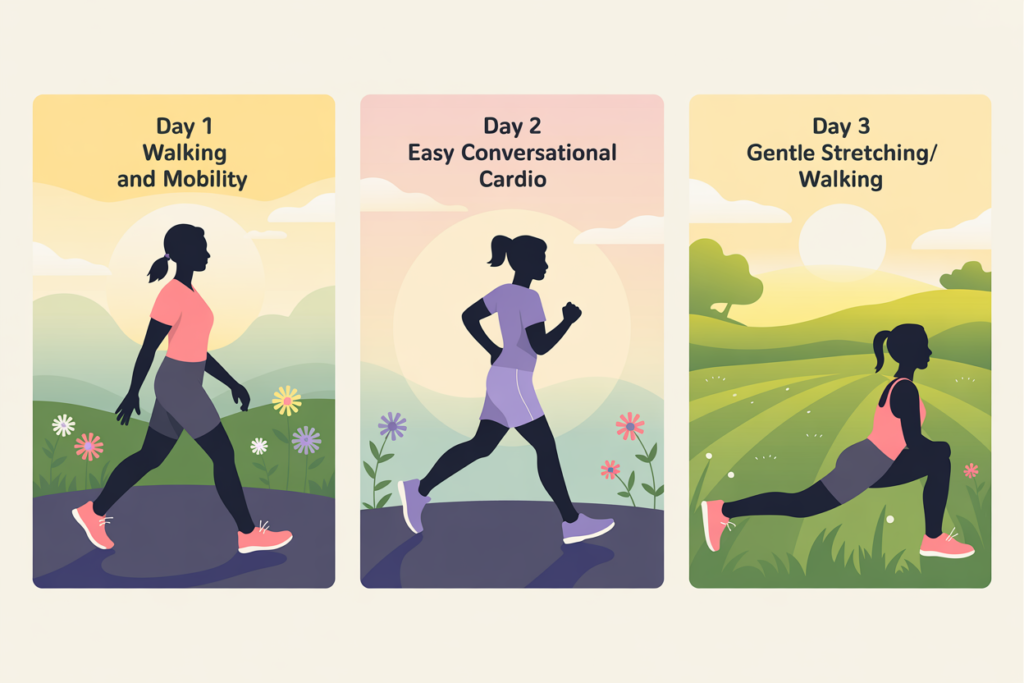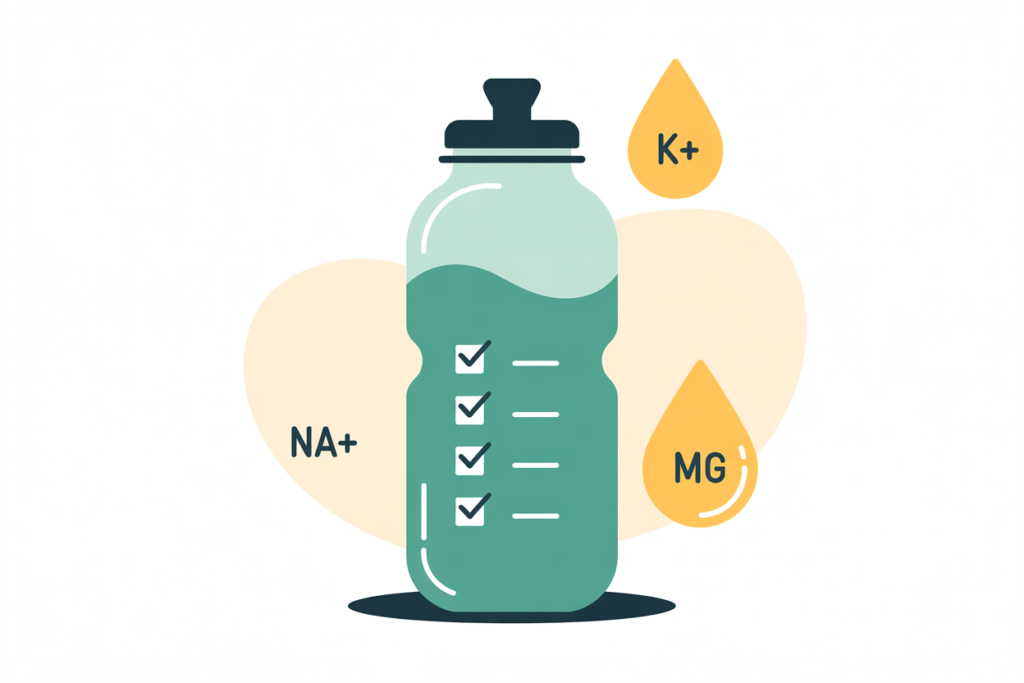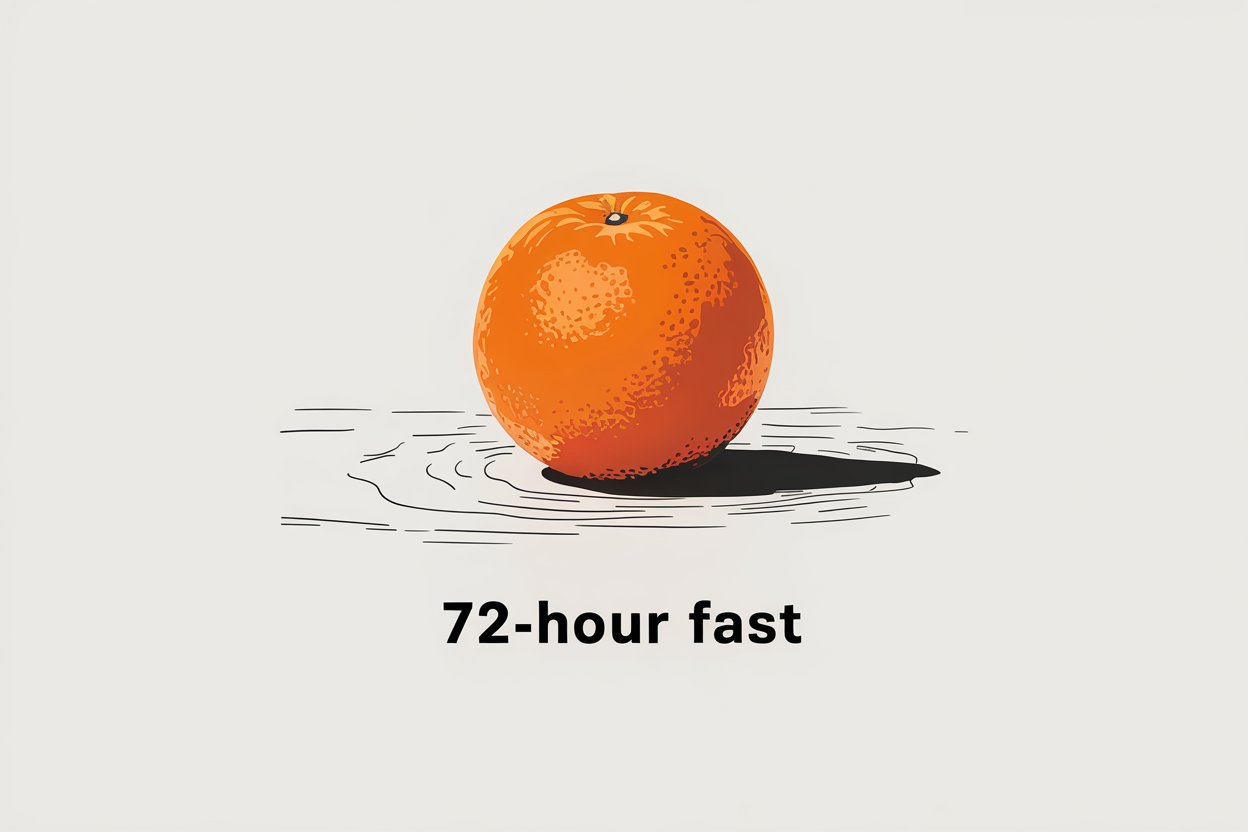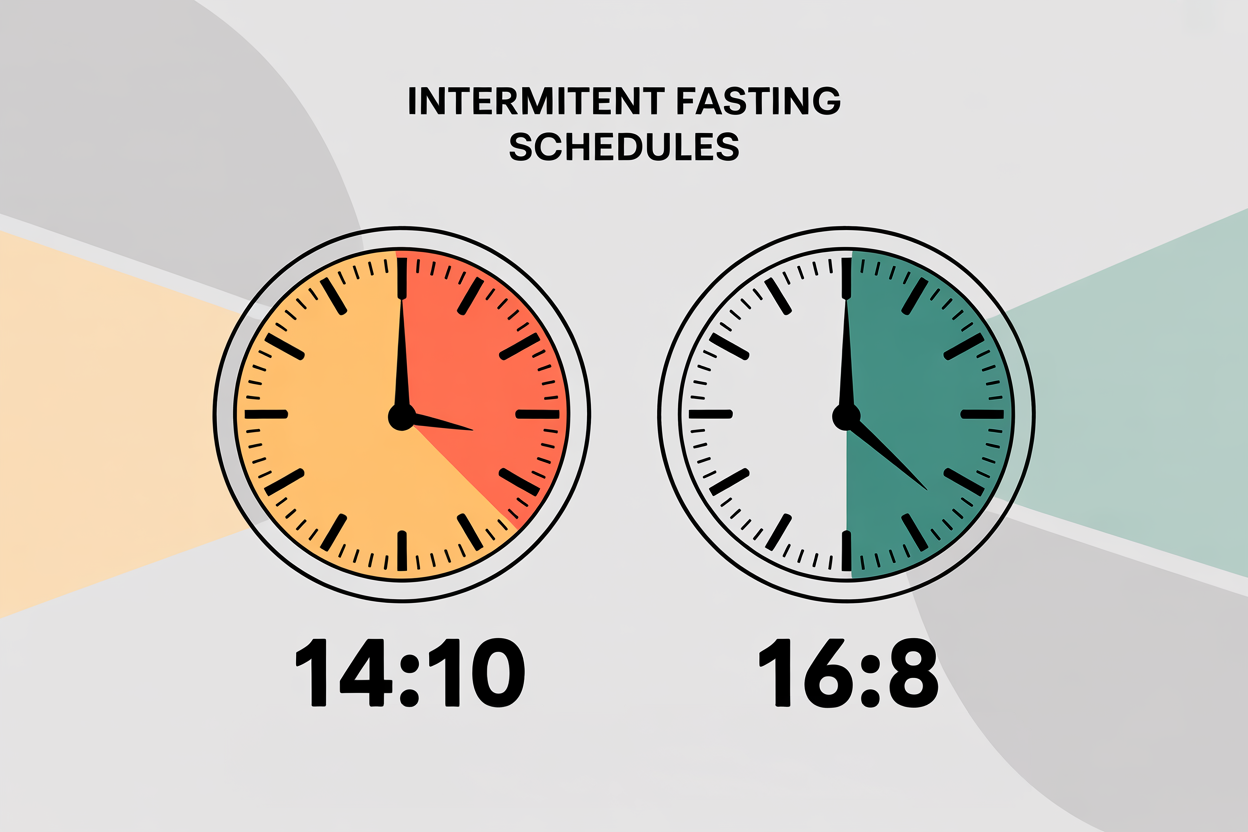If you’ve handled a 16:8 before, a full three days can feel like stepping off the map. You’re not looking for bravado. You want to know what your body is actually doing and how to make the experience less chaotic. That’s what this is—an honest, hour-by-hour view with simple guardrails so you don’t white-knuckle your way through it.
This walkthrough assumes a water-only approach with plain, noncaloric fluids. It isn’t a medical plan. If you use glucose-lowering medications, have significant heart, kidney, or liver disease, are pregnant or breastfeeding, are under 18, underweight, or have a history of disordered eating, talk to a clinician first—or skip multiday fasting timeline altogether. Safety beats willpower every time.
How to Use This Guide
You’ll see three steady threads:
- What’s happening under the hood. A plain explanation of the fuel shift.
- How it might feel. The normal, the odd, and the “hm, that’s new.”
- One small action. A simple move that keeps you from spiraling.
We’ll also set stop rules up front and end with a gentle refeed plan so the finish doesn’t wreck the win.
Before You Start: Set Yourself Up to Succeed
Think of the day before as your “quiet launch.”
- Tell someone you trust. Share your plan and when you’ll check in.
- Look at your week. Move heavy workouts, late nights, and heat exposure off the calendar.
- Baseline yourself. Morning weight, seated blood pressure/heart rate. Optional home glucose/ketone reading if you’re curious—not to chase a score.
- Caffeine plan. If you’re a daily user, taper in the afternoon so sleep cooperates.
- Have minerals on hand. You’re not “flavoring” anything; you’re supporting nerves and muscles if symptoms crop up.
- Plan the first small plate for refeed. More on that later, but having it ready beats raiding the pantry with a celebration brain.
Write your stop rules on a sticky note where you’ll see them. In a wobble, read the note and follow it. No negotiations with hungry-you.
Stop Rules (Non-Negotiable)
End the fast and eat if you have:
- Fainting, chest pain, shortness of breath, or confusion.
- Repeated vomiting or you can’t keep fluids down.
- Dizziness that doesn’t ease after measured fluids and minerals.
- A glucose reading below your clinician’s threshold or a sharp drop if you’re monitoring.
- New neurologic symptoms (weakness, vision changes, slurred speech).
This isn’t a dare. You can always try again another time.
Movement Plan for the Stages of Fasting for 72 Hours
- Day 1 (0–24 hours): Walks and light mobility.
- Day 2 (24–48 hours): Optional easy, conversational cardio for 20–30 minutes.
- Day 3 (48–72 hours): Walking and stretching only. Skip max efforts and heat marathons.

You’re keeping your nervous system calm while your fuel system changes lanes.
The 72-Hour Fast Timeline: The Various Stages
Hours 0–12: Coasting on the Last Meal
Under the hood. Insulin drifts down. Your liver covers most needs from stored sugar while early “homemade” glucose production wakes up.
How it may feel. Habit hunger at the times you usually eat. Slight dip in pep if your last meal was light.
One small action. Set a steady fluid rhythm. Protect sleep tonight by keeping stimulants early.
Hours 12–18: First Click of the Gearshift
Under the hood. Fat release picks up. For many people, ketones begin to rise above baseline.
How it may feel. Hunger becomes more wave-like than constant. Mood steadies once a wave passes.
One small action. Keep movement easy. If standing makes you woozy, you’re behind on fluids or minerals—correct calmly and reassess.
Hours 18–24: Appetite Levels Out
Under the hood. Alternative fuels climb; repair-leaning hormonal pulses start to stand out.
How it may feel. Head feels clearer, stomach quieter. If temples throb or calves twitch, you’re likely short on minerals.
One small action. Don’t improvise. Use the mineral plan you set before you started.
Hours 24–36: Stored Sugar’s Mostly Spoken For
Under the hood. The liver’s stash is largely used. Fat-derived fuels and freshly made glucose carry the day. Cellular housekeeping likely rises somewhere in this window, but timing isn’t identical for everyone.
How it may feel. Easy walks feel great; stairs feel heavier. You might run cooler.
One small action. Swap intensity for consistency—short walks, gentle stretching, earlier bedtime.
Hours 36–48: Settling Into Your 72-Hour Fast
Under the hood. The brain leans more on ketones. Rhythms that favor maintenance over storage become more pronounced.
How it may feel. Even focus if you slept well; irritability if you didn’t. Night cramps or wild dreams can pop up if minerals or stimulant timing are off.
One small action. Guard sleep like part of the protocol. Dim lights early, park the phone, make the room cool and quiet.
Hours 48–60: The Long Middle
Under the hood. Fat is the main fuel; your nervous system is more sensitive to overdoing it. Neurometabolic shifts have been measured in humans after 72 hours.
How it may feel. Cold hands, lightness in mood, or a surprise energy dip. Standing too fast can tug a head rush.
One small action. Keep the pace gentle in everything—walks, conversations, chores. If your day demands hills, heat, or heroics, move them.
Hours 60–72: Preparing the Landing
Under the hood. Ketones are high for you; insulin sits low relative to your normal. The big risks now are ignoring red flags or breaking the fast like it’s a feast.
How it may feel. The finish-line buzz shows up, along with impatience. Sleep can wobble if stimulants crept late.
One small action. Set out the first small plate now. Re-read the stop rules. Last mile = quiet mile.
Common Bumps and What They Usually Mean
The head rush when you stand.
Usually fluids/minerals. Sit, breathe, correct, and wait a few minutes before deciding anything.
Night calf twinges.
Often a mineral rhythm problem or a late stimulant. Adjust earlier in the day and add a gentle pre-bed stretch.
Feeling colder than your family members.
Normal for many during long fasts. Layers help. A warm shower and light movement raise comfort without overtaxing you.
Grinding fatigue on day two.
Check sleep and pacing first. Then check whether you let small, intense tasks sneak in (long hot errands, extra stairs, stress spikes).
A pounding pulse with little activity.
Slow down, cool the room, sit, and correct fluids/minerals. If it doesn’t settle, you’re done for now—refeed.
When anything scares you, stop. “Better safe” is not failure; it’s wisdom—especially when it comes to a 72-hour fast.
Sleep Is the Hidden Lever
People underestimate how much sleep dictates day two and three. Protect it like a paid gig.
- Keep stimulants earlier in the day.
- Wind the house down—dim lights, quiet background.
- Cool, dark room. A fan or white noise helps some brains click off.
- Make a short ritual: gentle stretch, quick journal line, or a warm shower.
If sleep craters, dial down effort tomorrow. You aren’t weak; you’re listening.
Mindset That Actually Helps
You don’t need slogans. You need a simple plan and curiosity.
- Name your goal in two lines. “I want to learn how my energy shifts and whether minerals head off headaches.”
- Log observations, not judgments. “Energy dipped at 2 p.m.; felt better after fluids.”
- Decide in advance what ends the fast. Your stop rules are a promise to your future self.
When you look back, the notes beat your memory every time.
The Quiet Way Back to Food

The transition matters more than people think. Your gut’s been on airplane mode. Flip it back on carefully and you avoid the “why did I do that to myself” afternoon.
The Refeed Ladder (First 6 Hours)
0–60 minutes: Fluids first.
Resume plain fluids. If you finished the fast feeling depleted, include a measured mineral bump. Sit still and let your stomach wake up.
60–180 minutes: One small, simple plate.
Pick a gentle option and eat slowly. Think warm, soft, and easy to digest—light protein, simple carbs, a touch of fat. You’re reminding the system how to work, not testing its limits.
3–6 hours: Back to a balanced meal.
Protein, vegetables, a carb you tolerate well, and a familiar fat. Save the mile-high dessert and celebration spread for another day. You’ll enjoy it more when your gut’s fully online.
Training After the Fast
First session back = coordination, not conquest. Rehydrate, extend your warm-up, keep intensity submaximal, and pay attention to how your head and legs talk to each other. If something feels off, you’re done for the day.
A Simple Fluids & Minerals Game Plan (No Menus)

Hunger is rarely what ends a long fast; sloppy fluid/mineral rhythms do. Keep it mechanical.
- Set check-in times. Don’t chase thirst all day.
- Use easy cues. Pale yellow urine and a steady standing pulse are better than guesswork.
- Correct, then wait. If you feel wobbly, sit, sip, add your planned minerals, and give it ten minutes before making your next move.
You don’t need a catalog of “allowed drinks.” You need a rhythm that fits your body.
FAQs About the Stages of Fasting for 72 Hours
Do I need lab work first?
If you have chronic conditions or take medicines that affect glucose or fluids, talk to your clinician. Healthy adults can usually rely on home baselines.
Should I track numbers?
Optional. Home glucose or ketone checks can teach you about your fuel switch. If numbers make you anxious, skip them and track how you feel instead.
Can I lift?
Light technique work is fine. Think crisp reps, longer rests, and lots of stopping before things get grindy.
Is three days “better” than thirty-six hours?
Depends on your goal. A longer fast deepens the fuel shift and maintenance signals, but the experience—and risk—also scale. Many people get real-life benefits from shorter windows.
What if I feel amazing at seventy-two and want to keep going?
Don’t extend on your first run. Finish well, debrief your notes, and make a thoughtful plan if you try for longer later—with medical input if you’re on relevant meds.
Turn the Plan Into a Routine You Can Actually Follow
Remembering steps when you’re tired is rough. A little structure keeps you honest and calm.
- A 72-hour fast timer with gentle prompts so you check fluids, note symptoms, and wind down at night.
- Quick checkboxes for common signals (head rush, calf twinge, cold hands, great focus).
- A single “stop now” button that walks you through the refeed ladder if a red flag appears.
- A one-page summary you can share with your clinician if you want to review what happened.
You can do this with a notebook, or you can let the Fasting App by Municorn handle the scaffolding while you pay attention to the experience. Set the timer, log what matters, and build your own pattern library for next time.
The Whole Thing, in One Breath
Tell someone. Clear your week. Set stop rules. Start steady. Keep movement easy. When symptoms show up, correct them on purpose. Prioritize sleep. Land gently with the refeed ladder. Debrief what you learned. That’s the entire playbook.
Three days isn’t about proving something. It’s about learning how your body behaves when digestion steps out of the spotlight—and giving yourself a kinder way to get from hour zero to hour seventy-two without guessing.
This guide is educational and does not replace care from your clinician. If you’re unsure whether this protocol fits your situation, don’t run it solo.




